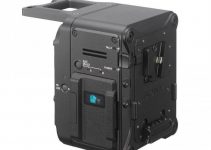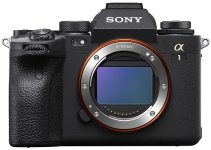Shooting green screen has become an expected part of the current film production environment. Whilst films such as Avatar combine live-action with computer generated characters thus resembling to a large extent a children’s animation, Fincher’s films as The Curious Case of Benjamin Button and more like Zodiac use visual effects in subtle ways allowing a story to be told on the big screen without the viewer even realising the large extent of employed effects.
TV stations are just as likely as Big Hollywood productions to use green screens. Weather broadcasts are shot on either green or blue screen, which allows the background to be keyed out and replaced with maps and temperature guides.
Although one might think it is complicated to light a green screen scene, there are some basic setups that can be easily used even on a budget.
Basic Setups for Shooting Green Screen
There are a few foundational elements when shooting for green screen. The materials used, the positions of actors or subjects and the lighting of both the background and foreground subjects play a key role when shooting for green screen. The right combination of materials, positioning and good lighting will save hours during the keying or matte extraction process.
To make the keying process easier, the green background must be lit evenly throughout as shadows are hard to key out. Even background lighting is essential around fine hair or transparent items such as glass or liquids. Keeping the subject far away from the green screen will prevent reflection from the screen to spill on the subject and will also allow for the subject to be lit on its own with full control over the exposure and direction of the light sources.
The scene you plan to shoot on a green screen will determine the setup you require. For example, if you are only shooting the a close-up of the actor’s head or a mid-shot of the upper-torso area, then the floor does not need to be lighted or even covered. If the actor will interact with the green screen, however, the lighting needs to be approached in a completely different manner.
A simple setup to light the upper-torso of an actor who does not interact with the background would be two screen lights set on the background with a simple three-point lighting setup for the subject. You can see the simple setup in the picture below.
If you are interested to read more about setting up three-point lighting, check out an article we did on How to Light a Black or White background a while back.
You need to remember though that the predominant light source on the subject or the key light should match the direction of the strongest light source in the background to which you are compositing. If, for example, you will replace the green screen with an outdoor scene with strong sunlight, you will need to not only match your key light to the direction the sun is shining in the background but also match the colour temperature and intensity.
The same lighting principles apply when you are compositing your subject for a darker scene – the intensity and direction of the key light should be matched to the background even if the subject seems to be under-lit as in the images below.
The fill light is used to fill the light throughout the scene. The position and intensity of the fill light (or several fill lights mixed with silks and/or reflectors, depending on the lighting setup of the scene) create the available ambient light in the scene.
The fill light also needs to mirror the mood and lighting of the intended background scene where outdoor scene during the day will require more fill lights than a dark scene in a bar or on a street under a street lamp. Matching the color temperature of the fill lights is as important as for the key light and can be achieved with coloured gels.
The back light, mainly used within studio settings, creates a soft halo effect on a subject’s hair. This light can help with separating the subject from the background but it might not the best option to use where matching lighting to the background scene needs to be accomplished.
When lighting the green screen and the subject separately you should make sure that the subject is far enough from the green screen – a minimum of 8 feet, so that you can control the subject lighting and avoid light spilling from the brightly lit green background.
If you do not have the space, you can use green coloured bulbs to control the colour temperature of the screen and reduce the amount of light needed to illuminate the backdrop, allowing for the subject to get closer to the screen.
Another simple setup is using the key light to light both the screen and the subject.
As the subject is placed close to the screen and the key light is strong, causing a shadow on the back wall, the setup works perfectly for live TV weather forecasters who interact with the screen where the director also wants to retain some shadows on the wall. In such cases, directors who are not worried about reflective spill, can use blue screens to achieve subtle shadows.
For larger green screen stages with many actors present on the green surface with a cyc wall, directors can use a “China Ball” light, a large diffused light that creates soft shadows. There is an example picture below showing several China Ball lights together with large silks, capable of illuminating a large area.
Overall, shooting green screen is not too hard. With practice and mainly proper planning everything can be accomplished.
[via Masteringfilm.com]
Disclaimer: As an Amazon Associate partner and participant in B&H and Adorama Affiliate programmes, we earn a small comission from each purchase made through the affiliate links listed above at no additional cost to you.
Claim your copy of DAVINCI RESOLVE - SIMPLIFIED COURSE with 50% off! Get Instant Access!




